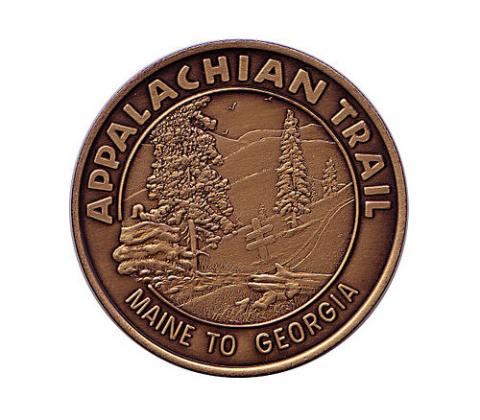Zigzagging 2,175 miles between Mount Katahdin in northern Maine and Springer Mountain in Georgia, the Appalachian National Scenic Trail threads through a who's who list of Eastern state and national parks.
From Baxter State Park in Maine, a sprawling mass of nature that preserves some of New England's most wild lands, through the White Mountains of New Hampshire, the Green Mountains of Vermont, and on south through Delaware Water Gap National Recreation Area, Harpers Ferry National Historical Park, Shenandoah National Park, and along the spine of Great Smoky Mountains National Park to Springer Mountain, Georgia, the trail is a throw back.
Known as both the "People's Path" and the country's first national scenic trail, the "AT" is a corridor of Americana. A part of the National Park System since October 2, 1968, and managed cooperatively with the Appalachian Trail Conservancy, the trail preserves both nature and history, capturing the imagination of what was, the beauty of the seasons, and the personality of the Eastern Seaboard.
The AT gained life through an article the late Benton MacKaye wrote for the Journal of the American Institute of Architects in 1921. In it, the forester ruminated on the need for Americans to spend more time at leisure, preferably in the outdoors.
“It fortunately happens that we have throughout the most densely populated portions of the United States a fairly continuous belt of under-developed lands. These are contained in the several ranges which form the Appalachian chain of mountains. Several National Forests have been purchased in this belt. These mountains, in several ways rivaling the western scenery, are within a day's ride from centers containing more than half the population of the United States. The region spans the climate of New England and the cotton belt; it contains the crops and the people of the North and the South,” Mackaye wrote. “The skyline along the top of the main divides and ridges of the Appalachians would overlook a mighty part of the nation's activities. The rugged lands of this skyline would form a camping base strategic in the country's work and play.”
When the National Geographic Society asked McKaye to write the foreword to its 1972 book on the trail, he recalled that, “Somewhere, sometime back there near the end of the old century, the notion of an Appalachian Trail occurred to me." He added that his idea was “for a trail that would run in a wilderness belt from one of the highest mountains in New England to one of the highest in the South.”
A year later the first section of the trail, rambling from New York State’s Bear Mountain to Arden, New York, via Harriman State Park, opened. The entire trail was in place by 1937. Since its completion, more than 10,000 hikers (traveling in the footsteps of Earl Shaffer, who was first to go end-to-end, in 1948) are thought to have walked the entire length – north to south or, more often, south to north to take advantage of the weather. An estimated 3-4 million trek some portion every year.
They walk the spine of the stately Appalachian Range to savor some of the last remnants of wildness to be found in the East and to test their bodies and their mettle before moving on with life in a more serious vein. And in doing so, they endure the lashes living out of doors can inflict. From sprains and sunburn to poison ivy, falls, and threats of attack by a black bear or even a wild boar in the Smokies, the Appalachian Trail is not without its dangers. It forces hikers to confront nature on its terms. Waterfalls, while beautiful when in full runoff stage, can by icy cold, their mossy rocks slippery. Caves bore down into the guts of the mountains, posing their own threats to the curious. And then there are Timber rattlesnakes and Northern copperheads that, when interrupted from a sunny repose, can inflict painful, though rarely fatal, bites.
Rarer still but not unheard of are crimes more associated with urban areas than the trail’s leafy setting – thefts and assaults and, in exceedingly unusual and brutal cases, murders. Since 1974, when the first murder associated with the Appalachian Trail was reported in Georgia, there have been at least nine homicides. The most sensational in recent years involved the slayings of two women, Julianne Marie Williams and Laura "Lollie" Winans, whose bound and beaten bodies were found in May 1996 along the trail in Shenandoah. Hands tied behind their backs and throats slit, the two women were targeted for being lesbians.
Even still, crime along the trail is an anomaly, something that doesn’t enter the thoughts of most who set out down the trail. Rather, they come to enjoy this waning slice of wilderness, to walk among the tulip poplars, the spruce and fir, the oaks and maples, to cross streams on log bridges, to sleep beneath the stars.
“To walk. To see. And to see what you see!” was the hope MacKaye espoused for those who took to the trail.




Add comment